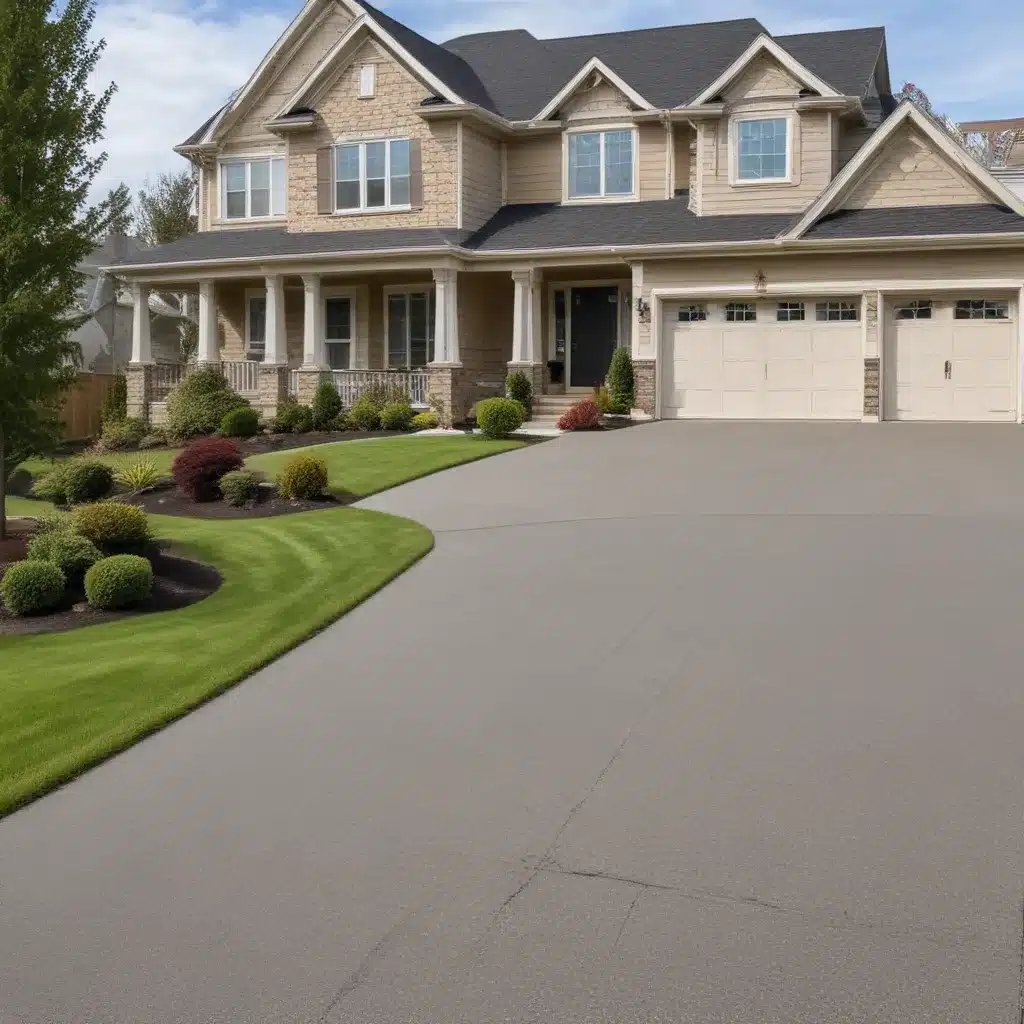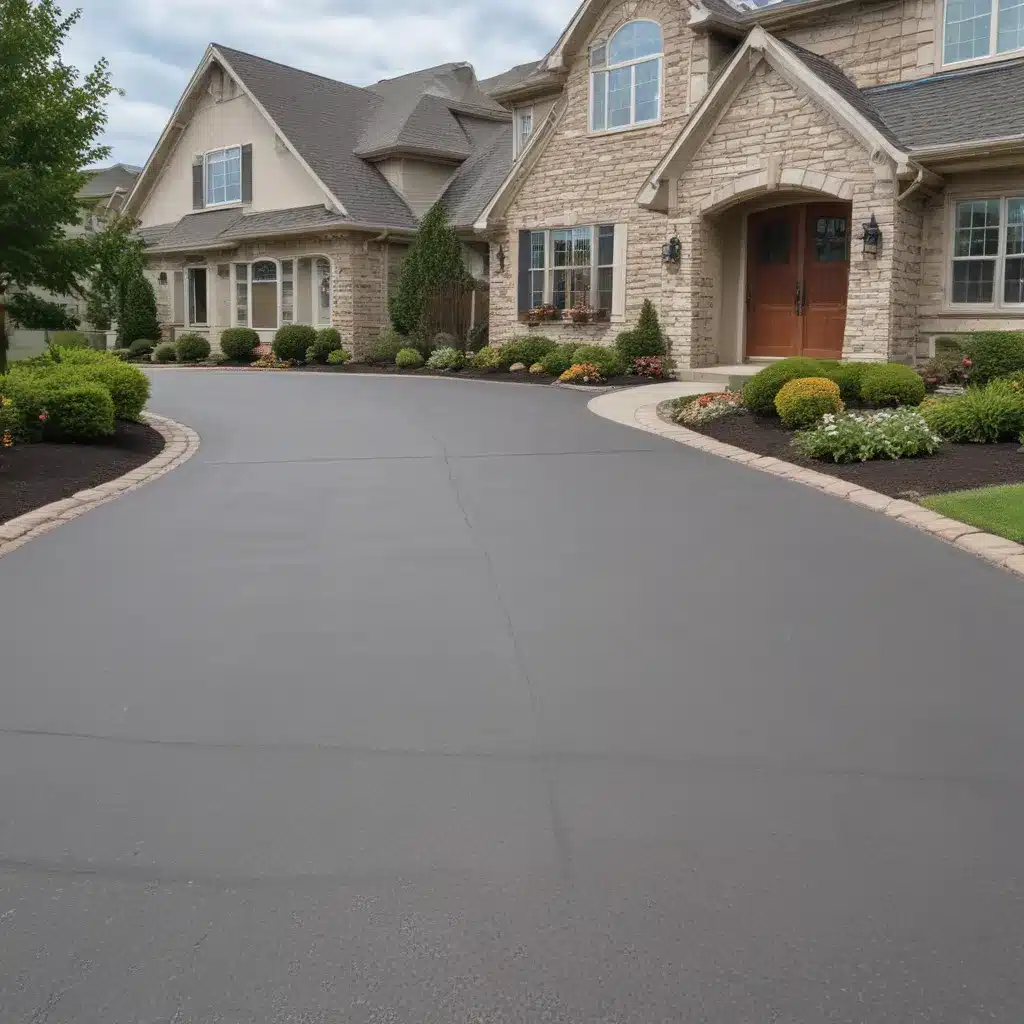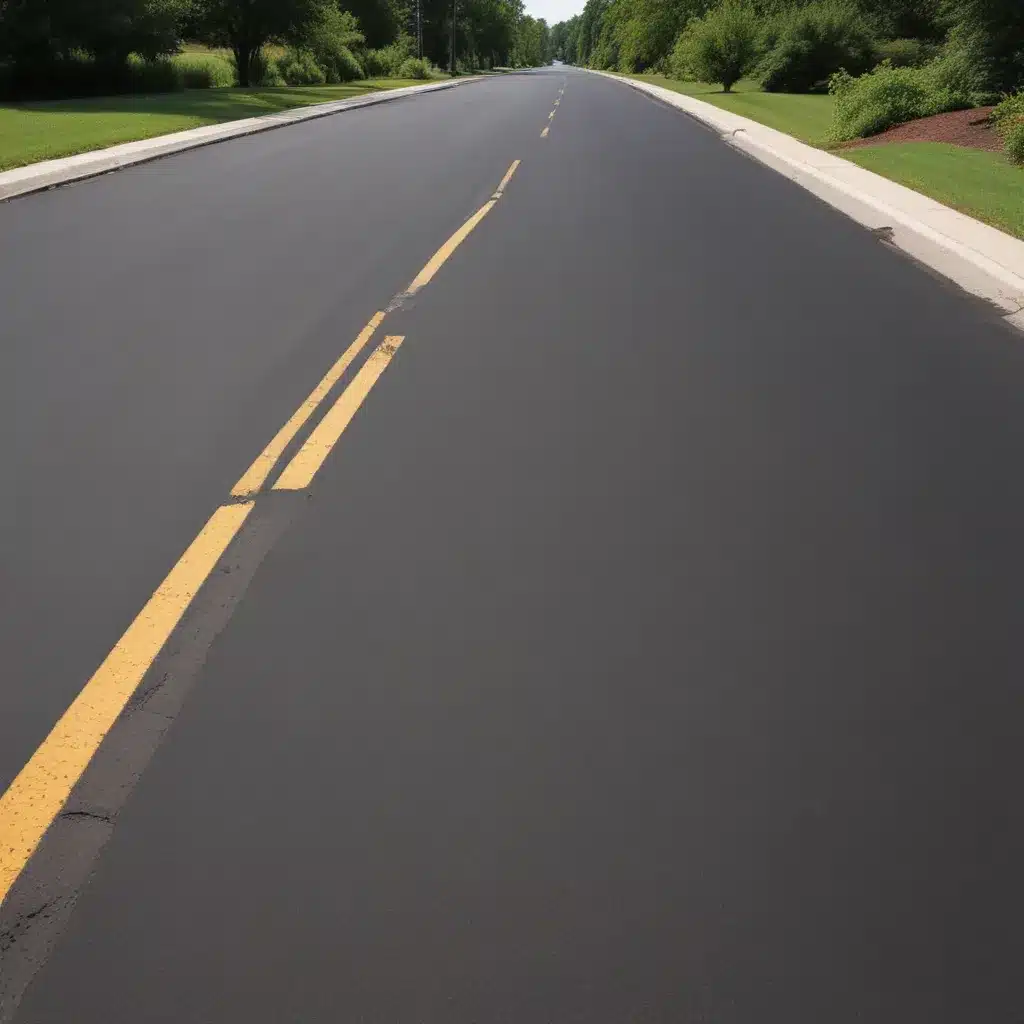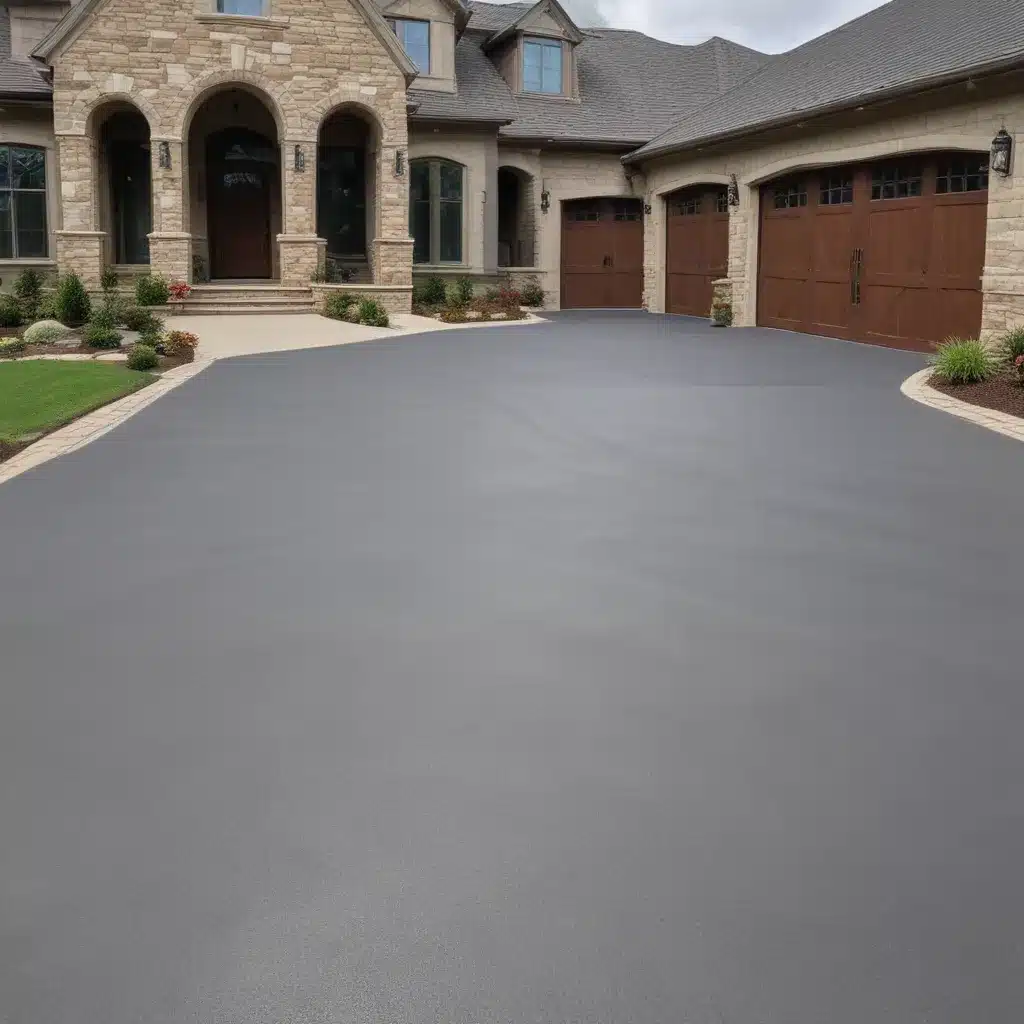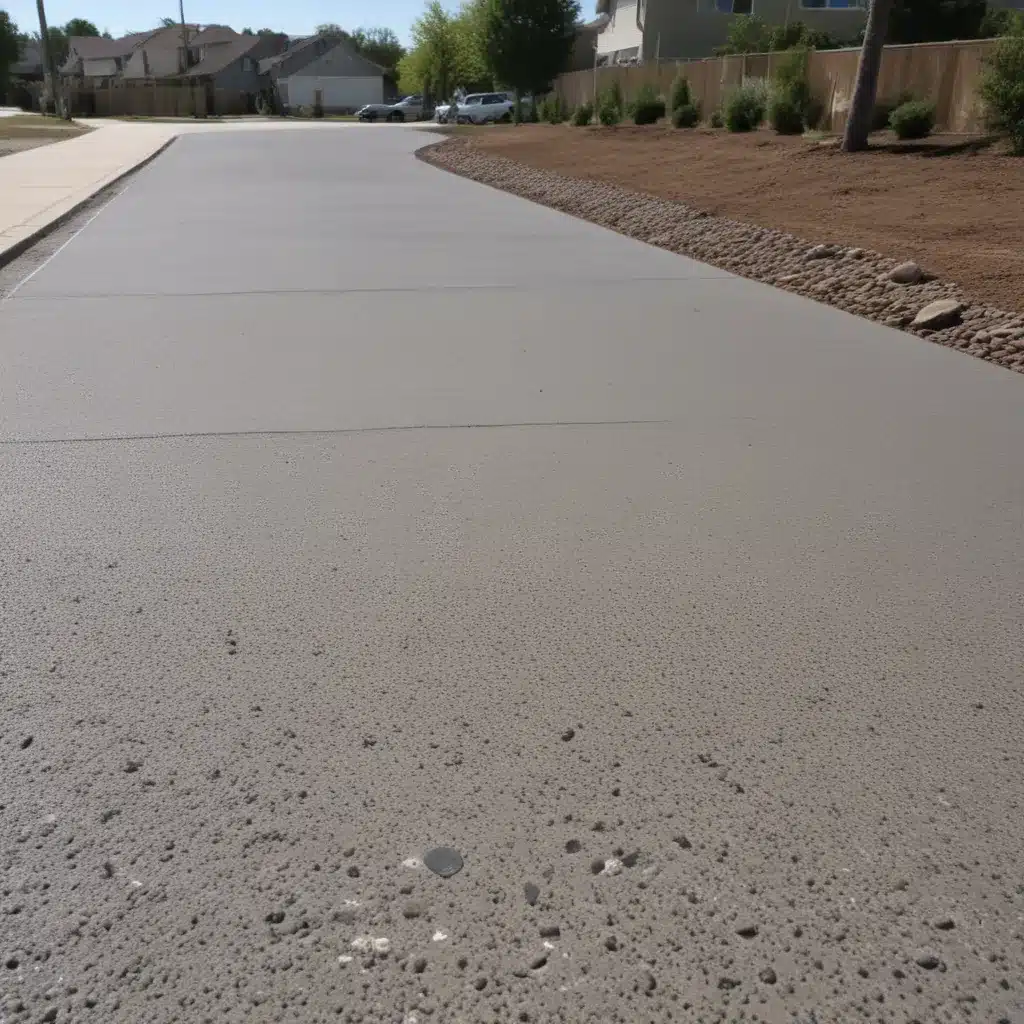The Goldilocks Conundrum: Finding the Perfect Driveway Width
As I stand in front of my freshly paved driveway, I can’t help but feel a sense of pride and accomplishment. After all, the driveway is the first thing people see when they visit your home – it’s a statement about your style, your priorities, and your overall approach to life. But as I gaze upon this newly minted stretch of asphalt or concrete, a nagging question begins to creep into my mind: “Is this driveway the right width?”
It’s a Goldilocks-esque dilemma, isn’t it? Too narrow, and you’ll be playing a frustrating game of three-point turns every time you pull in or out. Too wide, and you risk wasting valuable real estate, not to mention the additional cost and environmental impact. But just right? Ah, that’s the sweet spot we’re all searching for.
Factors to Consider When Determining Driveway Width
So, what exactly constitutes the “just right” width for a residential driveway? Well, my friend, it’s not as simple as you might think. There are a number of factors to take into account, each of which can tip the scales in one direction or the other.
First and foremost, we have to consider the size of the vehicles that will be using the driveway. Are you a proud owner of a hulking SUV or a sleek sports car? The width of your driveway should be tailored to accommodate the dimensions of your ride(s). As a general rule of thumb, you’ll want to add about 1-2 feet of width for each additional vehicle you need to fit.
But vehicle size isn’t the only consideration. The layout of your property and the surrounding landscaping can also play a role. If you have a narrow lot or a winding driveway, you may need to opt for a more compact design to avoid encroaching on your neighbor’s space or disrupting the natural flow of the landscape.
The Importance of Functionality and Aesthetics
Of course, it’s not all about practicality – the aesthetics of your driveway matter too. After all, this is the first thing guests will see when they arrive at your home. Do you want a bold, statement-making expanse of concrete or a more subtle, natural-looking path of pavers? The width of your driveway can have a significant impact on the overall curb appeal of your property.
Think about it this way: a sprawling, multi-car driveway might convey a sense of wealth and luxury, while a more modest, single-car design could lend an air of quaint, understated charm. It’s all about striking the right balance between functionality and aesthetics.
Navigating Local Regulations and Recommendations
But wait, there’s more! As if the personal preferences and practical considerations weren’t enough, you also have to contend with local zoning regulations and building codes. These can vary greatly from one municipality to the next, so it’s essential to do your homework and understand the specific requirements in your area.
In some communities, there may be strict guidelines on the minimum or maximum width of residential driveways. Others may have more flexible guidelines, but still, offer recommendations based on factors like lot size, zoning, and even the type of materials used. It’s a veritable minefield of regulations and recommendations, but navigating it is crucial to ensure your driveway project is up to snuff.
Driveway Width: The Experts Weigh In
Now, I know what you’re thinking: “This is all well and good, but what do the experts say?” Well, fear not, my curious friend, for I’ve done the research and compiled some invaluable insights from the pros.
According to the American Society of Landscape Architects, the recommended width for a single-car driveway is between 9 and 12 feet, while a double-car driveway should be between 16 and 20 feet wide. Of course, these are just general guidelines, and they may need to be adjusted based on the specific factors we discussed earlier.
But don’t just take their word for it. I’ve also consulted with some of the top driveway contractors in the industry, and they’ve shared their own insights and experiences. “We always recommend erring on the side of a slightly wider driveway,” says John, a veteran paver with over 20 years of experience. “It may cost a bit more upfront, but it provides much-needed flexibility and prevents those frustrating three-point turns.”
And then there’s Sarah, a landscape designer who’s seen her fair share of driveway dilemmas. “The sweet spot seems to be around 16-18 feet,” she muses. “That gives you enough room to accommodate most vehicles, while still maintaining a clean, cohesive look that complements the overall design of the property.”
Real-Life Driveway Makeovers: Lessons Learned
Of course, the proof is in the pudding, as they say. So, let’s take a look at a few real-life driveway makeovers and the lessons we can glean from them.
Take the case of the Johnson family, for instance. They had a narrow, one-car driveway that was just barely wide enough for their compact sedan. When they decided to upgrade to a larger SUV, they knew they had to do something about their driveway. After consulting with a local paving contractor, they opted to widen it by a few feet, and the difference was night and day.
“Not only is it so much easier to maneuver in and out, but it just looks so much better,” gushes Mrs. Johnson. “The extra space gives the whole front of our house a more polished, put-together vibe. And the best part? We can finally have our neighbors over for a driveway barbecue without feeling like we’re all sardines in a can!”
On the flip side, there’s the cautionary tale of the Smith household. They decided to go for a wide, multi-car driveway, thinking it would add value and curb appeal to their property. But as it turns out, their lot was just too small to accommodate such a grand design. The result? A driveway that felt more like a landing strip than a welcoming entryway.
“We really should have done more research and listened to the experts,” laments Mr. Smith. “Now, we’ve got this massive expanse of concrete that just looks out of place and takes up way too much of our front yard. It’s a constant source of frustration, and it’s going to be a pain to maintain in the long run.”
Striking the Perfect Balance: Driveway Width Considerations
So, what’s the takeaway here? Well, it’s clear that there’s no one-size-fits-all solution when it comes to driveway width. It’s all about striking the perfect balance between functionality, aesthetics, and local regulations.
As you embark on your own driveway project, I encourage you to carefully consider the size and number of vehicles you need to accommodate, the layout and dimensions of your property, and the overall design vision you have for your home’s exterior. And don’t forget to do your due diligence on local building codes and guidelines – trust me, it’ll save you a world of headaches down the road.
Remember, the right driveway width can transform the entire look and feel of your property, so it’s worth taking the time to get it just right. After all, first impressions count, and your driveway is the red carpet that welcomes your guests into your little slice of paradise.
So, what are you waiting for? Grab a tape measure, consult with the experts, and get ready to unveil the driveway of your dreams. Who knows, maybe you’ll even inspire your neighbors to follow suit and create a veritable driveway Renaissance in your community. The possibilities are endless, my friends – so let’s get paving!

